Much has been said about the novelist Dan Brown’s “hellish” depiction of Manila in his novel entitled “Inferno.” In the fictional novel, one of the protagonists was said to have been raped in one of Manila’s slums. Thin-skinned Manileños, who abhor any negative portrayal about their hometown, took this as a personal offense. This despite the fact that it was a work of fiction, and that Manila indeed is a city full of slums.
The ruckus reeled in the Metro Manila Development authority (MMDA), the agency that is responsible for maintaining the cleanliness and traffic of the sprawling metropolis. MMDA derided the American author for the scathing portrayal of Manila. It’s the Claire Danes affair redux. In the 1990s, the Hollywood star infamously said that Manila smelled like a sewer. This affair proves yet again that Filipinos can’t take criticisms – even if they are valid.
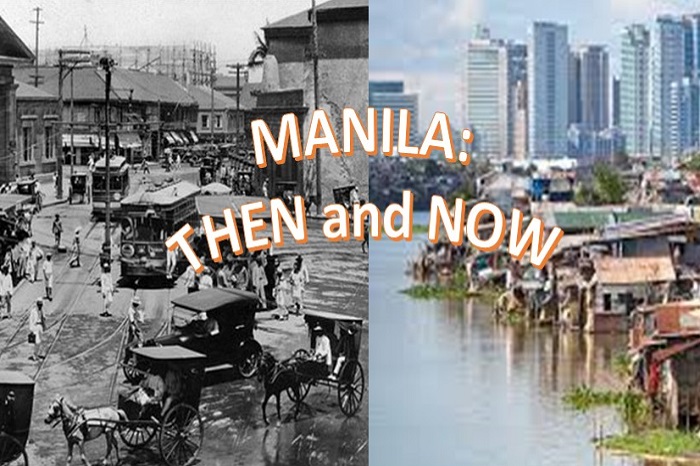
Who else would have the temerity to give a non-biased appraisal but someone who has no emotional attachment to it? Manileños are so inured with the present deterioration of their beloved city that they refuse to acknowledge the truth. Manila has become indeed a huge, hellish slum. It may be some form of defense mechanism to refuse to acknowledge the truth. Hence, we lash out at others who are merely doing us the favor of pointing out the obvious.
This was on my mind as I was about to return to Manila on board an Emirates flight from Madrid via Dubai. The plane ride was a reintroduction to Philippine culture as the flight was probably 99% Filipino. I was surprised at the number of infants flying on the plane. (How in the hell could Filipinos still breed that fast even abroad?). I surmised to myself that this was going to be a rough 8-hour stretch. I resolved to dim the ambient noise by drinking as much alcohol as I could.

The specter of long queues at the immigration counters awaited us upon arrival at Terminal 1 of the Ninoy Aquino International Airport (NAIA). With two other inbound planes from Los Angeles and Hong Kong, there was very little space to maneuver among the multitude of people at the very narrow immigration area. I have always dreaded passing through this airport. As much as I hate passing through US airports, at least they have orderly systems in place to manage the movement of passengers.
NAIA Terminal 1 has none of that. What applies here is free-for-all chaos. Filipinos, who usually behave accordingly abroad, suddenly revert to their undisciplined selves. Every man, woman, and child for themselves. The mass of humanity is just too much for the antiquated ventilation system of the airport.
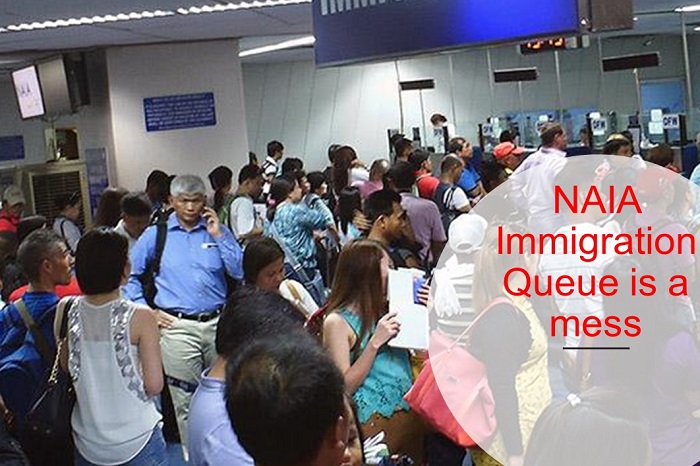
It’s not much different in the section reserved for foreigners. It is eased because arriving foreigners are way less than the number of arriving Filipinos. Yet, they also have to endure the same level of congestion and bottleneck. Unscrupulous immigration officers are openly seen facilitating the entry of chaperoned VIPs to the chagrin of everyone.
Now, getting inside the airport is actually the easy part. The harder part is getting out of the airport. In order to retrieve one’s luggage, one has to endure a long and tiring wait in the terminal’s conveyor belts. Even if one wants to sit, it is basically impossible because no available seats can be found. Faced with a sudden need to go to the rest room? The ill-maintained rest rooms will test your level of adventurousness as no toilet paper can be found. Add to that the fact that the bathroom cleaners are trying swindle money out of you.
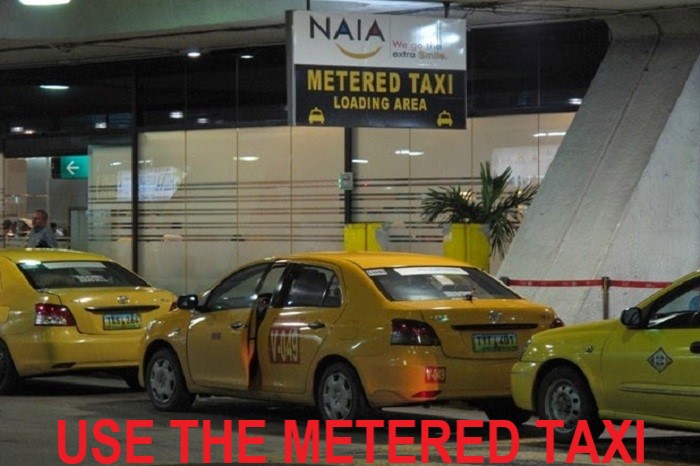
If one is lucky enough to remain unscathed after that ordeal, getting a transportation out of the airport is a challenge. Public transportation connecting the airport to the city is non-existent. One has to deal with unscrupulous airport taxi operators. They shamelessly charge the hapless passengers for an arm and a leg. It is very hard to understand why an efficient public transportation link can’t be established to connect the airport to the city. Basically every city in the world has a rail or a decent BRT link to the airport. Manila can’t seem to understand this basic need.
Why the Philippines continues to insist on using this inefficient airport puzzles me. I swear I could hear the Emirates pilot snicker when he announced that our flight’s landing would be delayed due to traffic congestion at the lone runway. When even pilots deride our air traffic congestion, that should be enough motivation for soul-searching. Yet, we have been inured for so long by the inefficiencies of NAIA that we have come to accept it as the norm.
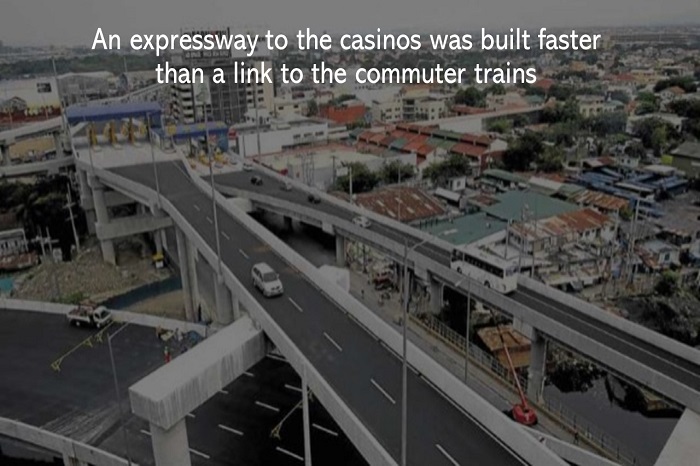
I perfectly understand why decision-makers are loath to leaving NAIA. The other options, namely, Clark International Airport or Sangley Point also pose similar logistical constraints. Hence, it is much wiser to build the transport infrastructure first before moving the international airport anywhere. What are we to do anyway with the on-going PHP9 billion NAIA expressway project if we move our international airport out of town? Come to think of it. Our eminent urban planners were able to construct an elevated expressway to connect the airport to the fledgling casino resorts faster than to link the airport to the commuter trains.
Considering the limitations and constraints that NAIA has at the moment, and it does have a long laundry list, there is indeed a need for a bigger, modern airport to serve Metro Manila and its environs. The main issue with this airport is that terminals are not integrated, forcing the passengers with connecting flights to brave the traffic outside. Moreover, NAIA is essentially a single-runway airport. NAIA is plainly obsolete. It was built for single-aisle aircraft.
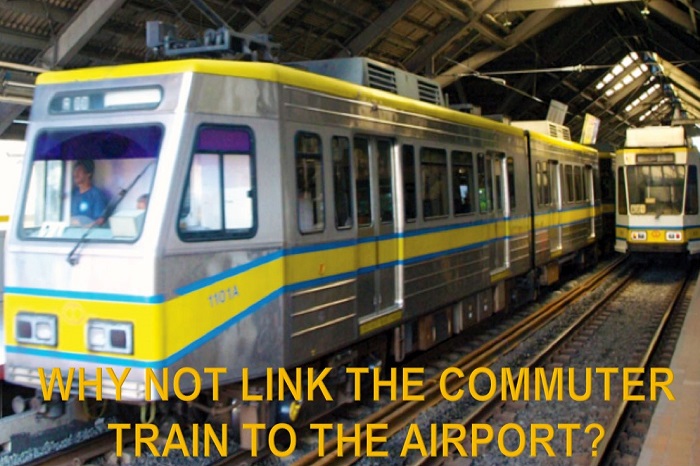
Dan Brown’s decision to link Manila to his new novel “Inferno” has opened an opportunity for us to rationalize this criticism. Manila is indeed a huge, overgrown “hellish” slum. No thanks to the lack of foresight of our political leaders and urban planners. If Manila is indeed “hellish,” then NAIA is rightly the “Gates to Hell.” Anyone who has passed through that shitty airport would be able to understand that. It truly deserves its reputation as one of the World’s Worst Airports.